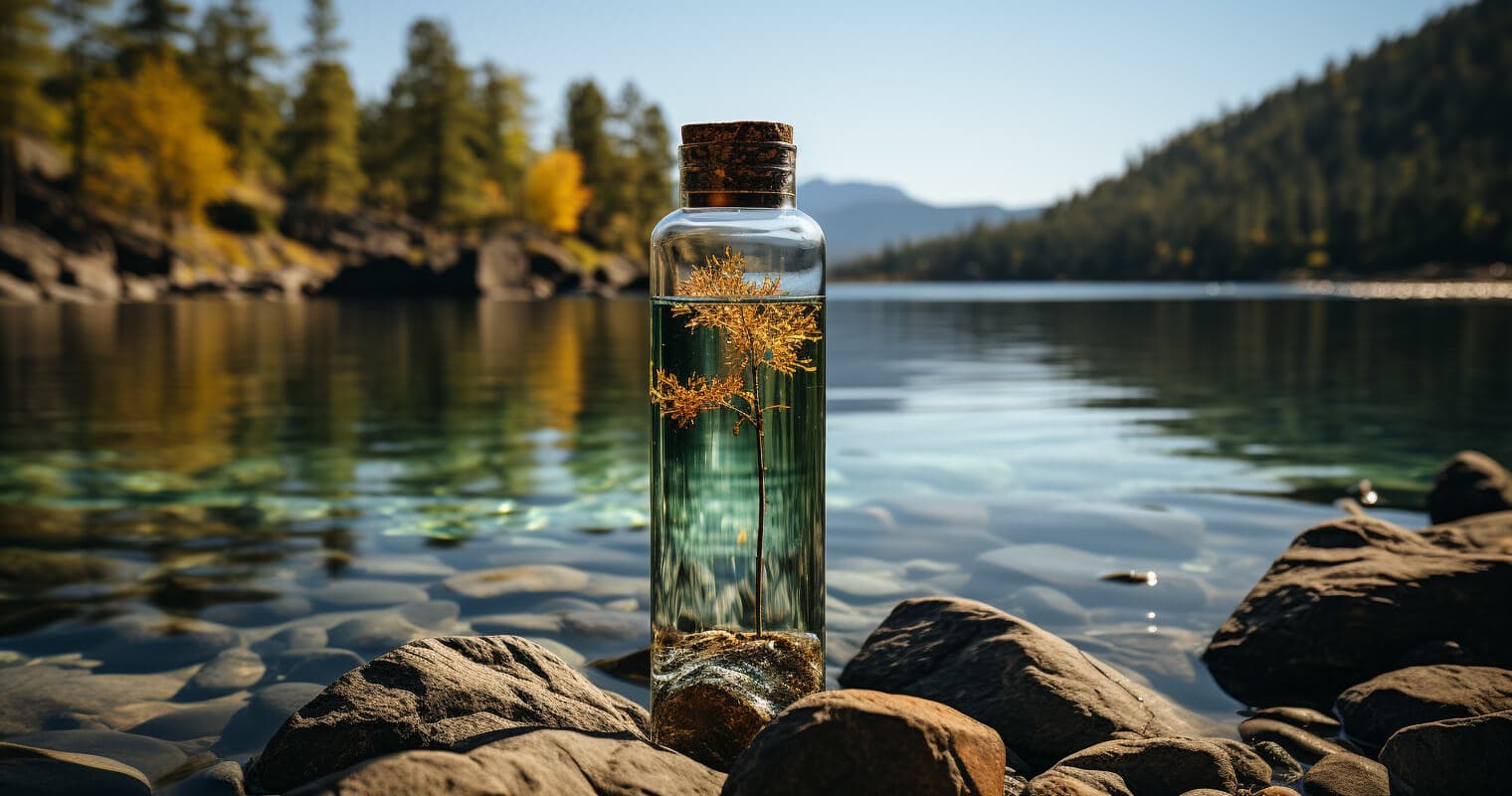Comparing Water Filtration Systems for Backpacking

Water is life – an undeniable fact that every backpacker understands. Whether you’re hiking through arid desert trails or navigating the lush paths of a mountainous terrain, having access to clean, drinkable water is a priority.
Water filtration systems serve as the lifeline to hydration and survival in the great outdoors. This article will guide you through the diverse world of water filtration systems, exploring their types, the factors you should consider when choosing one, and we’ll close with my recommendation for models I use while backpacking. Let’s dive in to ensure your next adventure is well-hydrated and safe!
Table of Contents
- The Need for Water Filtration
- Types of Water Filtration Systems
- Factors to Consider when Choosing a Water Filtration System
- Maintaining Your Water Filtration System
- Choosing a Water Filtration System
The Need for Water Filtration
Out in the wild, water sources are both a gift and a potential hazard. While they are essential for hydration, cooking, and hygiene, they may also harbor harmful microorganisms like bacteria, protozoa, and viruses, which can cause diseases such as giardia, E.coli, and Hepatitis A.
Natural water sources may also be contaminated with sediments, chemicals from agricultural runoff, and human waste, especially in high-traffic areas. Drinking untreated water can lead to severe illness, negatively impacting your backpacking experience or even becoming life-threatening in extreme circumstances.
This is where water filtration comes in. Water filtration systems for backpacking are designed to remove these contaminants, providing safe, clean water. They work by physically straining out pathogens and debris. Some also have elements that neutralize or kill microbes.
With a reliable water filtration system, you’re able to stay hydrated safely, regardless of the purity of your water source. This is a non-negotiable necessity for any backpacking trip, whether you’re a weekend warrior or an experienced long-trail hiker.
Types of Water Filtration Systems
Backpacking water filtration systems come in a variety of styles, each with their pros and cons, and are suited to different kinds of outdoor adventures. Here are some of the most common types:
Pump Filters: These are classic backpacking filters that use a hand-operated pump to force water through a filter element. They can filter out bacteria, protozoa, and sediments, but usually not viruses. Pump filters are reliable and can filter water from shallow sources, but they tend to be heavier and require more physical effort.
Squeeze and Gravity Filters: These filters use the force of gravity or manual squeezing to move water through a filter element. They are usually lightweight and easy to use, making them ideal for solo backpackers or small groups. However, they may clog faster than pump filters, especially when filtering silty water.
Bottle Filters and Filter Straws: These are built into a water bottle or are used like a drinking straw. They offer a quick and convenient way to drink directly from a water source. They’re great for day hikes or as an emergency backup, but may not be the best choice for filtering large volumes of water.
UV Purifiers: These use ultraviolet light to kill or inactivate all types of microorganisms, including viruses. They are small, lightweight, and work quickly, but rely on batteries or charging, which may not be ideal for longer trips or in areas without access to electricity.
Chemical Purification: While not a filtration method, chemical purification kills bacteria, viruses, and protozoa. They’re an ultralight and inexpensive option, but they require waiting time to be effective, and can leave an unpleasant taste in the water.
Each of these filtration systems offers unique benefits, and the choice often depends on factors like trip length, destination, group size, and personal preference. It’s also worth considering having a backup method in case your primary water treatment system fails.
Factors to Consider when Choosing a Water Filtration System
Choosing a water filtration system for backpacking isn’t a one-size-fits-all scenario. The best choice will depend on a number of factors tied to your specific needs and circumstances. Here are some key considerations:
Type of Microorganisms in the Water: The kind of pathogens you need to filter out depends on your location. While bacteria and protozoa are common in many wilderness areas in the U.S, viruses are generally not a concern. However, if you’re backpacking internationally, especially in developing countries, you may need a system that can eliminate viruses as well.
Weight and Size: If you’re ultralight backpacking, a small, lightweight filter or purifier will be a priority. However, if you’re traveling with a group, a slightly heavier, but more efficient system might be worth the extra weight.
Speed and Convenience: Some systems filter water as fast as you can drink it, while others require time to treat the water. If you need to filter a large volume of water at once, a gravity filter might be best. For smaller amounts, a pump filter, squeeze filter, or bottle filter could be more convenient.
Durability and Lifespan: Consider the overall durability and the lifespan of the filtration element. Can it be cleaned or does it need to be replaced? How easy is it to get replacements?
Taste: Some filtration systems can leave an unpleasant taste in the water, especially chemical treatments. If this is a concern, look for a system that includes an activated carbon element to improve the taste.
Source Water Quality: If you’ll be hiking in areas with a lot of sediment or heavy particulates in the water, a sturdy pump filter may be your best bet. For clearer mountain streams, a smaller, lighter option might work just as well.
Cost: As with any gear, cost is a factor. More expensive systems usually offer faster filtration and higher capacities. However, budget-friendly options can still offer reliable protection.
Considering these factors will help guide you to the most suitable water filtration system for your backpacking trip, ensuring you stay hydrated and healthy on the trail.
Maintaining Your Water Filtration System
Maintenance is crucial for ensuring the longevity and efficiency of your water filtration system. Here’s how to keep your filter or purifier in tip-top shape:
Clean Regularly: Especially if you’re filtering murky or turbid water, your filter can get clogged over time, reducing its effectiveness. Many filters can be backflushed to clean them out and restore their flow rate. This involves forcing clean water back through the filter in the opposite direction to remove trapped particles. Always check the manufacturer’s instructions for the recommended cleaning procedure.
Replace Filter Elements as Needed: Filters and purifier cartridges have a lifespan, often measured in liters of water they can treat. Keep track of roughly how much water you’ve filtered and replace the cartridges as directed by the manufacturer.
Dry Before Storage: When you’re done with your trip, be sure to dry out your filter system as much as possible before storing it. This prevents mold and mildew from developing, which could impact the filter’s effectiveness and the taste of your water. For many filters, you can disassemble them and air dry the parts.
Storage: Store your water filtration system in a cool, dry place. Avoid extreme temperatures which could damage the components. Keep it readily accessible for your next adventure!
Pre-Trip Checks: Before each trip, check your water filtration system for any signs of damage and make sure it’s working properly. Nothing ruins a trip faster than finding out your water filter is broken when you’re already out in the wilderness.
Proper maintenance of your water filtration system ensures it will keep working effectively trip after trip, providing you with clean, safe water no matter where your adventures take you.
Choosing a Water Filtration System
Choosing the right water filtration system for backpacking requires careful consideration of various factors such as the type of system, weight, speed, and ease of use. Your choice should ideally match your specific needs and preferences. Remember, what works best for one backpacker may not work as well for another.
There are four items I bring with me on every trip. A quality lightweight pump filter, a LifeStraw as an emergency backup, a foldable wash basin to collect water, and a 3 liter water bladder. These in my experience are must-haves.

Survivor Filter PRO Hydration Extender Series
Lightweight Pump Filter
4.6 out of 5
The triple filtration removes 99.999% of tested Virus, Staph, Bacteria and Protozoa. Weighing 12.8oz, this is one of the lightest and most compact water purification filters on the market. Comes with an extra set of replacement filters.

LifeStraw Personal Water Filter
Backup Water Filter
4.8 out of 5
Removes Bacteria & Parasites: The Microfiltration Membrane Removes 99.999999% Of Waterborne Bacteria (Including E. Coli And Salmonella), And 99.999% Of Waterborne Parasites (Including Giardia And Cryptosporidium)
Ultimately, the importance of a reliable water filtration system cannot be overstated. Staying properly hydrated with clean, safe water is vital on any trip, making the humble water filter an indispensable tool for any outdoor adventure. Regular maintenance of your chosen system also ensures that it continues to serve you efficiently, trip after trip. With the right water filtration system in your backpack, you can hike with confidence, knowing that clean water is always within your reach.
When you buy something using the retail links in our articles, we may earn a small commission. We do not accept money for editorial gear reviews. Read more about our policy.


